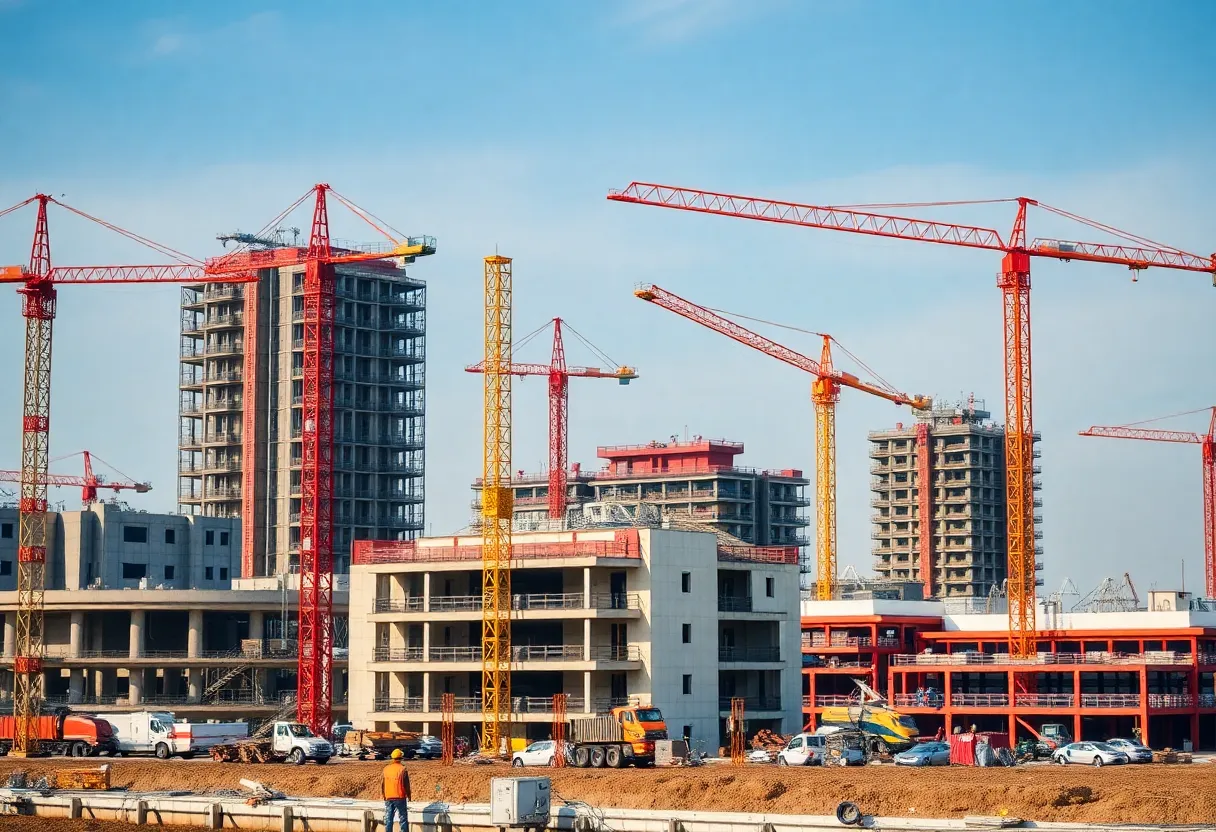News Summary
Canada has achieved a historic high in nonresidential construction starts with a total value of $77.2 billion, reflecting a remarkable 19.8% increase from previous figures. This growth primarily stemmed from five key megaprojects contributing over $30 billion to the total. As the construction industry stabilizes after recent challenges, focus is also shifting towards addressing Canada’s urgent need for new housing, with estimates suggesting up to 4.8 million homes required in the coming years. The ongoing investments signal a promising future for the sector.
Canada Reports Record High Nonresidential Construction Starts at $77.2 Billion for May 2025
The volume of Total Nonresidential Construction Starts in Canada hit a record-breaking $77.2 billion in May 2025, demonstrating a robust increase of $12.8 billion, or 19.8%, compared to preceding months. This surge marks a significant upswing in the construction sector, which had been struggling to regain momentum.
Monthly nonresidential construction starts reached the highest level on record, with nonresidential spending now reflecting a year-to-date growth of 6.9%. This marks the first positive growth reported for the current year, indicating that the market may finally be stabilizing after a series of declines during the pandemic.
Megaprojects Drive Growth
A notable contributor to this growth has been the occurrence of five megaprojects, which together accounted for over $30 billion of the total construction starts in May, setting a record for that month. These large-scale projects ranged from Transportation Terminals to Power Plants and Lines, as well as Tunnels, showcasing diversity in the areas attracting investment.
According to latest data, the 12-month moving average for megaproject spending has climbed to $12.3 billion, a remarkable rebound from a post-COVID low of $8.4 billion average monthly spending recorded in February. This clearly demonstrates a resurgence in confidence among investors and stakeholders in the construction industry.
Key Contributors to Nonresidential Growth
The lion’s share of the spending in May stemmed from the groundbreaking of the Taiwan Semiconductor Manufacturing Company new chip plant located in Phoenix, Arizona. This major project propelled the manufacturing sector from one of the bottom five categories to one of the top five best-performing categories year-to-date through May, showcasing the transformative impact of large-scale investments.
Megaprojects now represent a significant 39% of total nonresidential construction spending for the month, further underscoring their significance in the overall market dynamics. Data compiled through May indicates that there have been a total of 27 megaprojects valued at $67.9 billion year-to-date, highlighting a 50% improvement in activity.
Infrastructure Needs and Economic Factors
The current economic climate involves various factors, including trade relations, inflation, and challenges associated with climate change. The Canada Mortgage and Housing Corp estimates that Canada will need up to 4.8 million new homes in the coming years, emphasizing the growing demand for construction activities across the residential and nonresidential sectors.
Investments in infrastructure, particularly in First Nations communities, are being recognized as vital for fostering economic development and facilitating reconciliation efforts. Government officials underscore the economic potential of addressing the existing infrastructure deficit in these communities, which could further bolster the construction industry’s growth.
Future Outlook
Progress in the nonresidential construction sector in Canada signals that the construction industry may be stabilizing. Builders in Ontario have expressed gratitude for recent government initiatives aimed at supporting the construction sector. This public backing is likely to play a critical role in ensuring the industry continues on this positive trajectory.
Overall, as Canada witnesses a period of heightened activity in nonresidential construction, the trends suggest that a collective effort among stakeholders to address market demands and infrastructure gaps is yielding tangible benefits. The evolving marketplace presents a bright outlook for further construction endeavors in the near future.
Deeper Dive: News & Info About This Topic
Additional Resources
- The Globe and Mail: First Nations Infrastructure Investments and Reconciliation
- Construction Dive: Canada Construction Impact from Trump Tariffs
- Ferrovial: Ferrovial Awarded $1.2B in Infrastructure Projects in US and Canada
- Wikipedia: Infrastructure
- Encyclopedia Britannica: Construction
Author: Construction CA News
The CALIFORNIA STAFF WRITER represents the experienced team at constructioncanews.com, your go-to source for actionable local news and information in California and beyond. Specializing in "news you can use," we cover essential topics like product reviews for personal and business needs, local business directories, politics, real estate trends, neighborhood insights, and state news affecting the area—with deep expertise drawn from years of dedicated reporting and strong community input, including local press releases and business updates. We deliver top reporting on high-value events such as the Rose Parade, Coachella, Comic-Con, and the California State Fair. Our coverage extends to key organizations like the California Building Industry Association and Associated General Contractors of California, plus leading businesses in technology and entertainment that power the local economy such as Apple and Alphabet. As part of the broader network, including constructionnynews.com, constructiontxnews.com, and constructionflnews.com, we provide comprehensive, credible insights into the dynamic landscape across multiple states.




